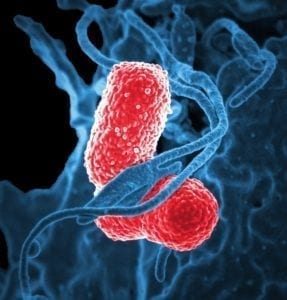A retrospective study recently published in the journal Pediatric Rheumatology has detailed the different antiphospholipid syndrome (APS) phenotypes in pediatric patients in effort to develop care approaches which are more personalized.
APS
APS is a rare autoimmune condition which causes thrombotic events and positive aPL antibodies. In adults, the Sapporo criteria work to classify the disease. However, there have yet to be a pediatric-specific disease criteria developed for this condition. Pediatric patients are provided treatment based on what has found to work in adults as well as a bit of anecdotal evidence from physician’s experiences with other pediatric patients.
There have been a few small case studies with APS patients which have shown there are plenty of symptoms which don’t fit into the Sapporo criteria. These include:
- Autoimmune hemolytic anemia
- Changes in the white matter
- Persistent thrombocytopenia
- Choreiform movements
- Lived reticulais or racemosa
- Cardiac valve abnormalities
This study aimed to better understand differences in pediatric patients and how their care should be managed differently or similarly to adult patients.
The Study
This study examined the electronic medical records from 21 pediatric APS patients who were cared for at Michigan Medicine within the time period of 2000 to 2019.
Of the 21 patients in this investigation, 10 were diagnosed with primary APS and 11 were diagnosed with secondary APS. Of those with the secondary form of the condition, 9 were diagnosed with systemic lupus erythematosus (SLE), and 1 was diagnosed with ulcerative colitis and microscopic polyangiitis (MPA).
Most of the patients in this sample were female (76%) and had a median age of 16 when they were diagnosed. The median follow up was 5.8 years.
Results
The research team found that 67% of patients had non-criteria manifestations of disease, and there were not any significant differences between those with primary and those with secondary APS. These included:
- Thrombocytopenia
- Lived reticularis/racemose
- Autoimmune hemolytic anemia
Additionally, 43% of all patients experienced recurrent thrombosis, 64% of patients had anti-β2GPI antibodies, 81% had anticardiolipin antibodies, and 52% had lupus anticoagulant. Further, DIAPS scores demonstrated that all patients, regardless of primary or secondary form of disease, faced a chronic disease burden.
What it Means
These results ultimately demonstrate that APS does not present with one sole distinctive feature in children. Instead, a myriad of symptoms impact pediatric patients. Knowing which symptoms and which features of disease are most common may mean pediatric patients can get their diagnosis sooner and begin effective treatments more quickly.
For instance, this team found that ANA testing is not an effective screening tool for APS on its own. ANA was only found to be positive in about 43% of all pediatric patients. Further, all of the patients who had these antibodies had secondary APS. The researchers therefore recommend screening with aPL instead of solely relying on ANA.
The researchers emphasize that pediatric patients who have thrombocytopenia and autoimmune hemolytic anemia should be tested for APS.
Another important implication is that anticoagulation therapies are necessary. Recurrence was very common in this study, but almost all recurrence occurred when anticoagulation therapies were not being taken.
The team is now conducting a prospective study on the same group of patients to evaluate stages of disease, other diagnostic markers, and potential treatments.
You can read more about this retrospective study and its findings here.








